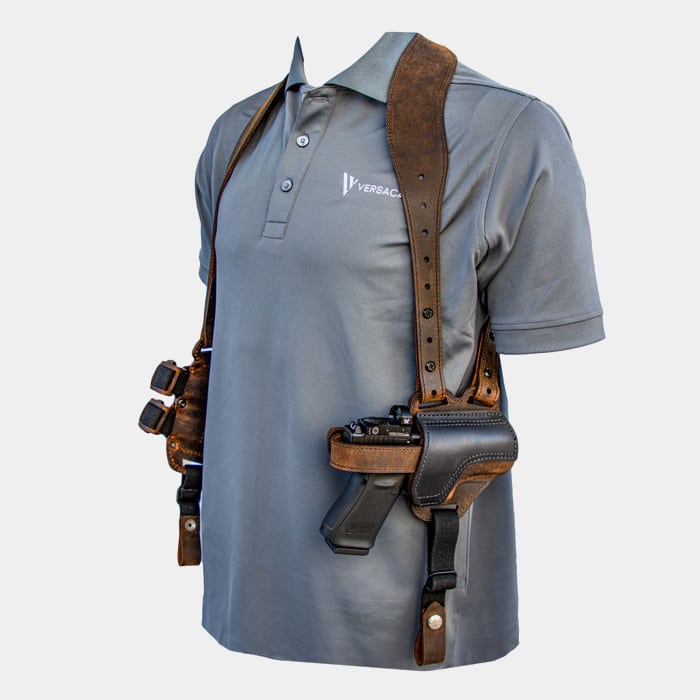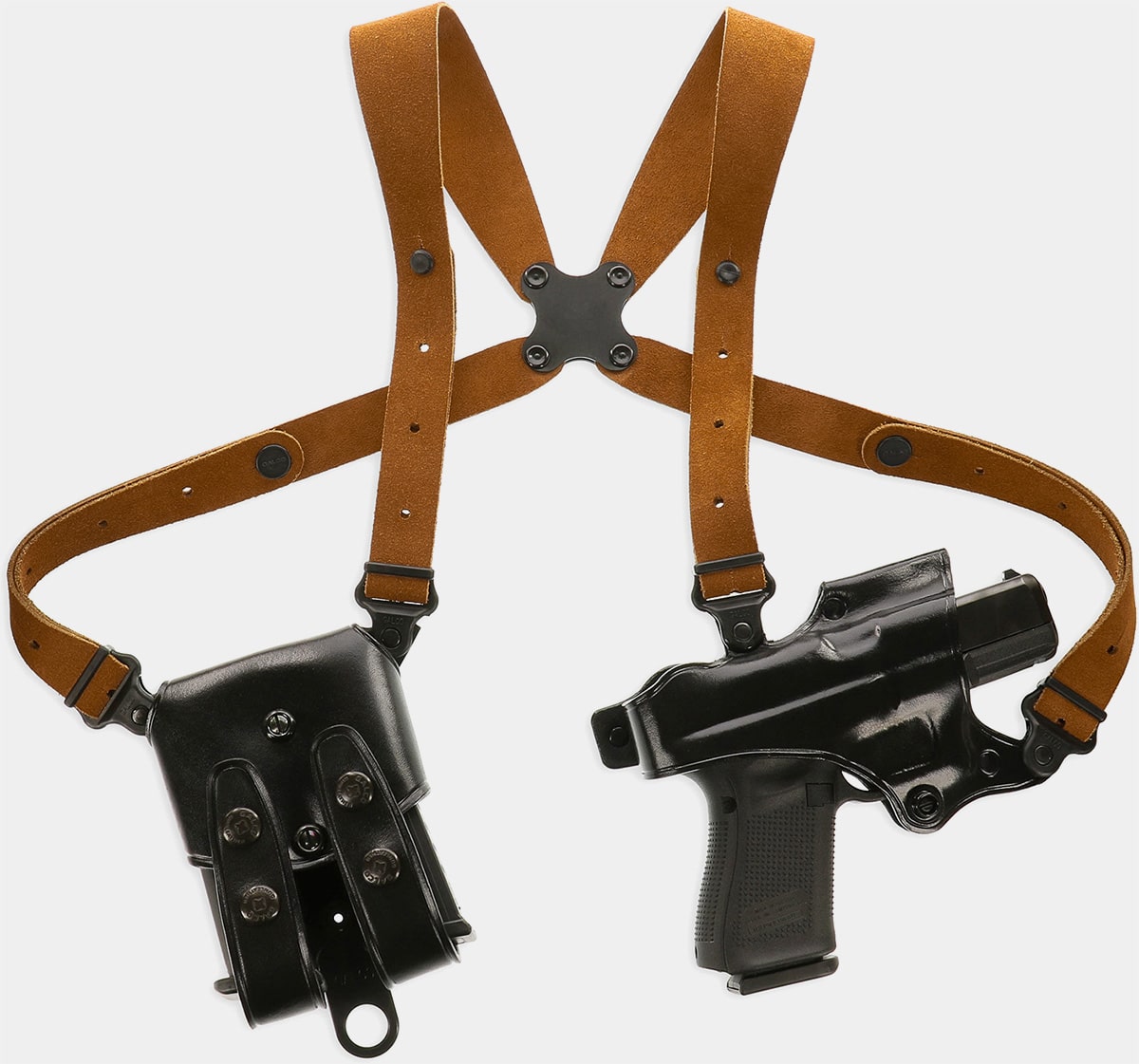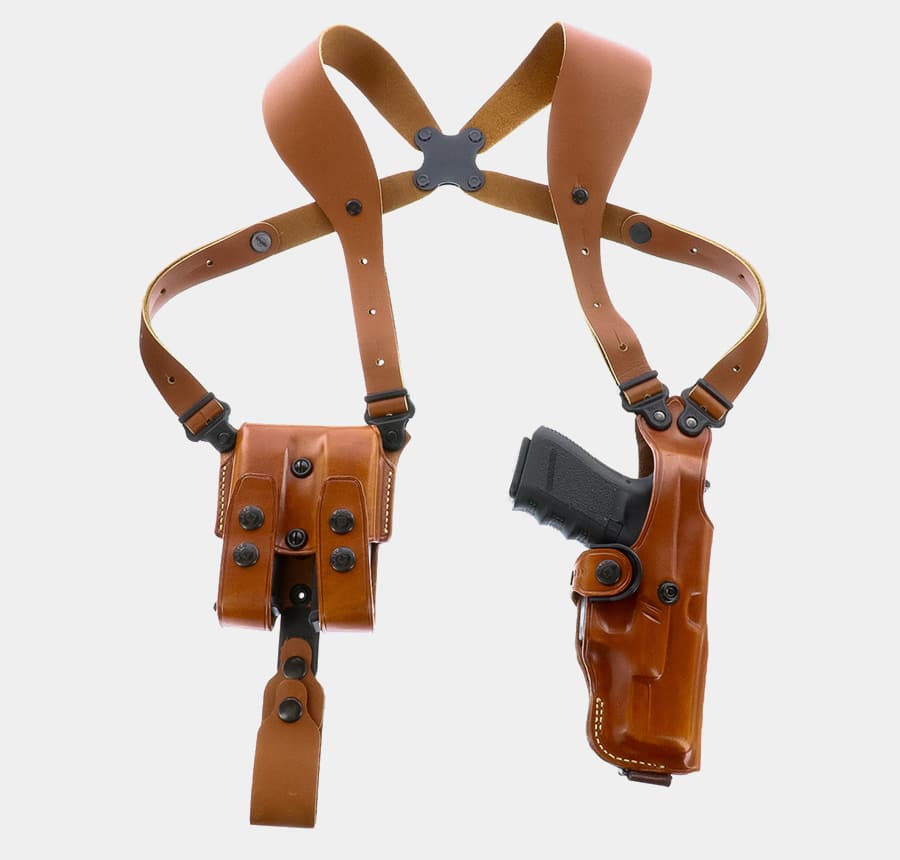I have carried a handgun on a daily basis for well over four decades, and during that time I have utilized just about every style of holster. Clearly, some worked very well for everyday discreet carry, while others such as an ankle rig were worn for a more specialized purpose. While I don’t consider my experience to be the last word on this topic, it’s safe to say I have developed some strong preferences for what might be a best choice for general carry.
Some years ago, I wrote an article for one of the law enforcement journals on concealed carry that caught the attention of a reader who wanted my thoughts about the use of shoulder holsters. Rather than just give him just my opinion, I solicited the thoughts of some very well-credentialed law enforcement firearms instructors on the topic.
Of the dozen queries I sent out, 10 came back less than enthusiastic while two were supportive. The two gentlemen who endorsed the use of shoulder holsters could not be any more different physically, but had a common purpose. Both had the need to discreetly conceal a large, heavy pistol while going about their business.
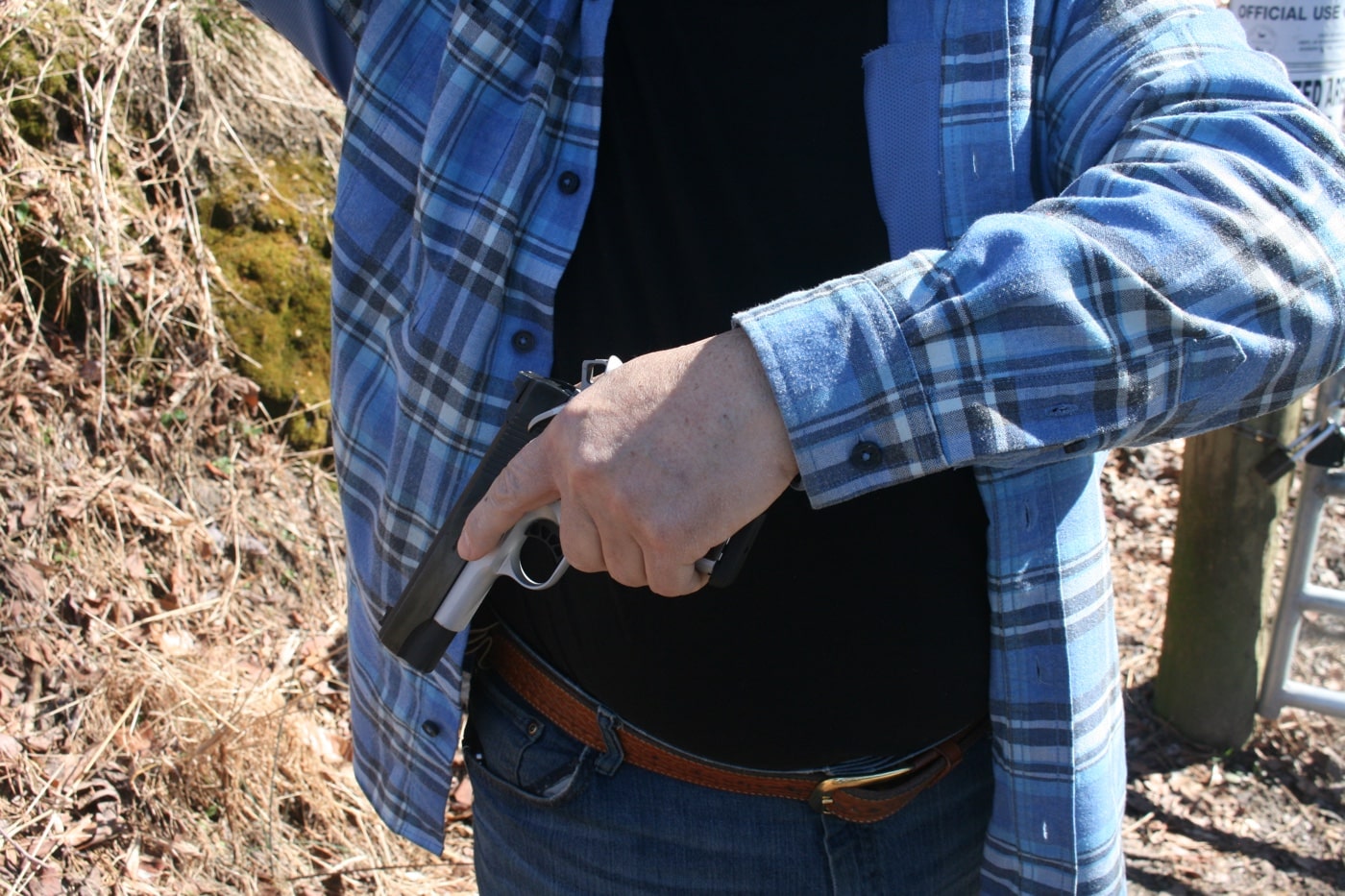
Shoulder holsters have long played a starring role on both the movies and television. Dirty Harry and Sonny Crockett both sported shoulder rigs, as did Detective Fish on the old Barney Miller sitcom. But making a visual splash on the silver screen is very different from the harsh realities of real life.
As with many things in life, there is both an upside and a downside to wearing a shoulder rig. For my own use, I have a strong preference for belt holsters the vast majority of the time, but on occasion there are exceptions. After carefully balancing the positives versus the negatives, you will have to decide whether a shoulder rig might fit into your game plan.
Areas of Concern
A shoulder holster might be described as a scabbard worn on the user’s support side, which is suspended by a harness worn around the shoulders. Vertical shoulder holsters that position the gun straight up and down with the butt forward, and horizontal shoulders orient the gun muzzle to the rear and butt forward, are the most popular. As long as you pay attention to the type of covering garment utilized, a horizontal shoulder rig can be an effective carry mode for a wide range of handgun sizes, from compact down to the micros. At one time, upside-down shoulder holsters that held the gun inverted were very popular, but their star has faded.
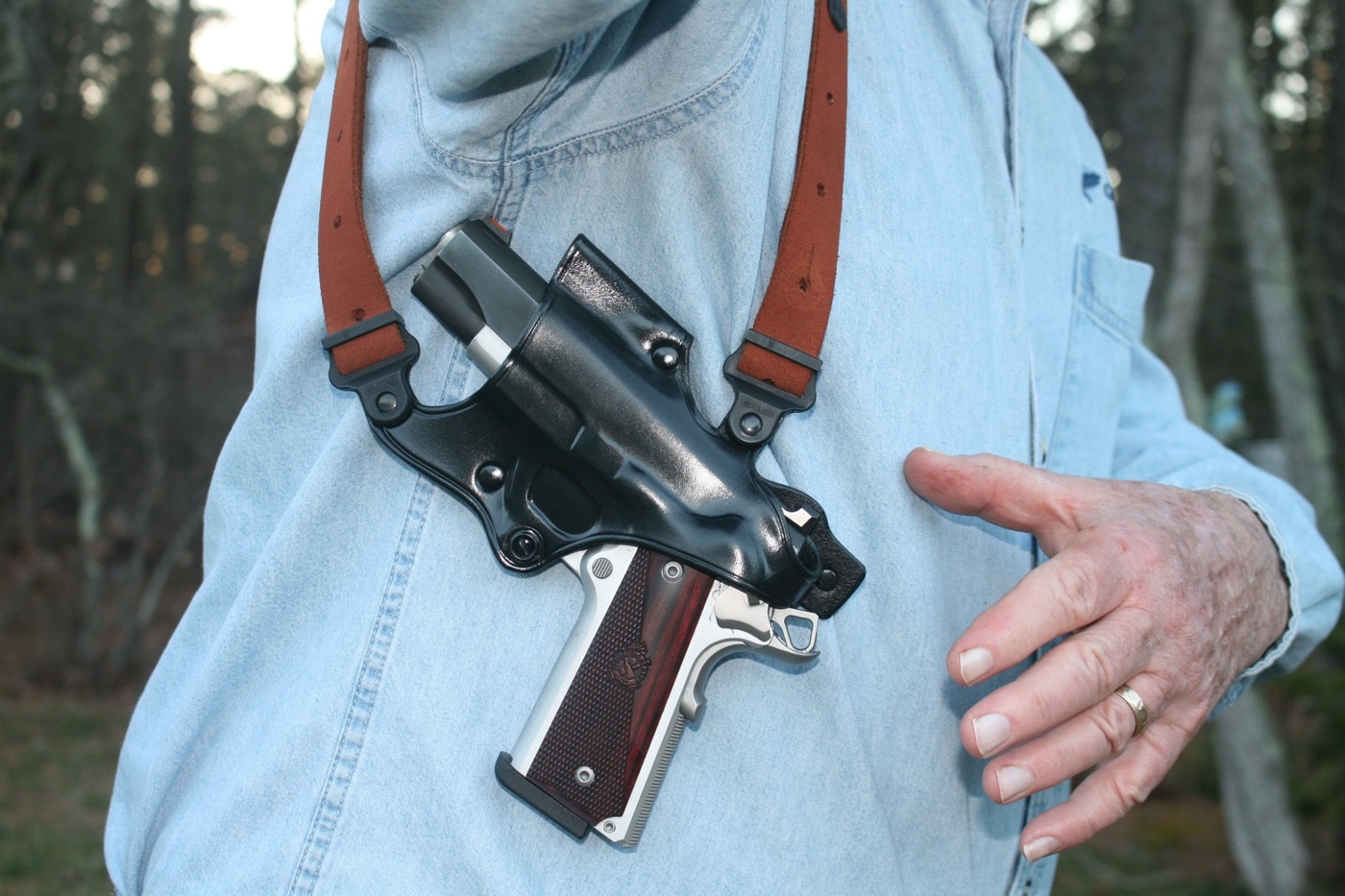
As a working law enforcement officer, I once carried my back-up gun in a horizontal rig under a jacket during the cooler months. After a period of time, I became disenchanted with this mode of carry because of weapon-retention concerns. I reasoned that the likelihood of a physical rather than deadly force confrontation was greater, and it was tough enough defending one gun in a grappling situation. I continued with the back-up the rest of my career, but moved it to a more hidden location. My concerns about a disarm were well founded and some years later, a big city police officer was killed by an assailant he had pinned to the ground who reached up and ripped his sidearm from a shoulder holster. Heightened concerns about weapon retention are a consideration with any shoulder holster.
A great many deadly encounters unfold at very close range, sometimes inside of personal space. Because one has to reach across the body to draw, this could present some serious complications if the threat has made or is about to make physical contact with you. If you choose to go with a shoulder holster you need to be keenly aware of this. Try to see the danger sooner and work on techniques where your initial response will be with an empty hand to buy time, and distance so you can draw your pistol.
Your wardrobe is yet another point to ponder. Without too much trouble, a pistol contained in a belt holster can be hidden in a loose-fitting, un-tucked shirt. Shoulder rigs require a covering garment that not only hides the holster itself, but does not allow the straps of the harness to print through. This is typically a non-issue with outerwear, but may be problematic with some stylish sport or suit jackets.
The Good News
As my associates reported, you can comfortably and discreetly carry a full-size handgun in a shoulder holster. It has been my experience that heavy, service-size pistols such as a 1911 are best in a vertical scabbard. Should you put that same pistol in a horizontal rig, concealment can be problematic for some body types.
There are of course advantages to getting the weight of the gun off the hips and onto the shoulders. Many gentlemen of distinction have back issues and have discovered that distributing the weight of the holstered handgun across the shoulders rather than the hips is a big relief. At one time I had some abdominal surgery and, to say the least, wearing a gun on the belt was very uncomfortable. Going with a shoulder rig for a short while proved to be a godsend.
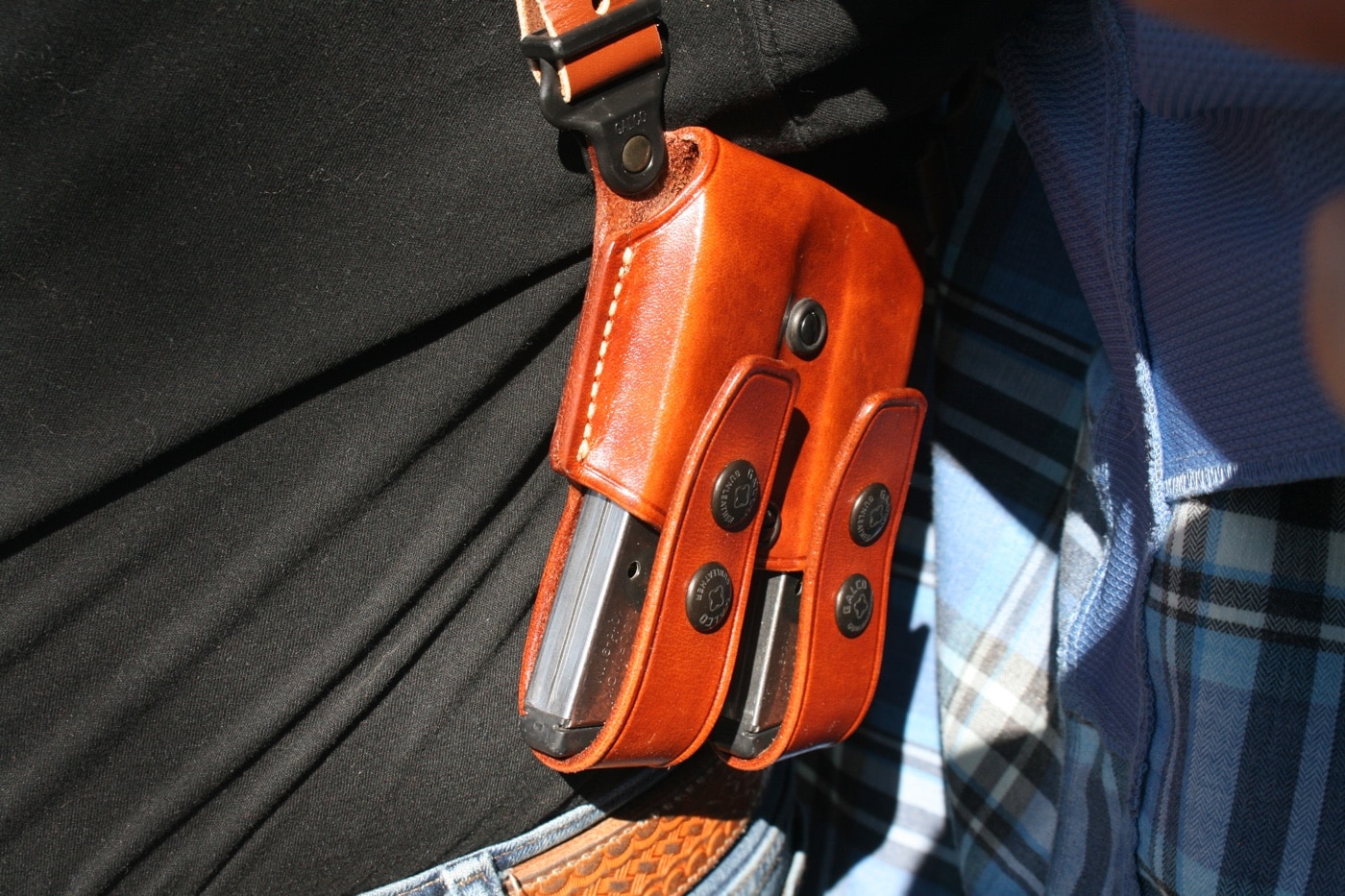
Most of the currently available shoulder rigs have a provision for a magazine pouch on the side opposite the holster. Although I find reloading from such a pouch to be little awkward, I recommend that you use them as a counterweight to the pistol. This helps to keep your clothing from pulling to one side and tipping off someone that you may be armed.
Do you spend a good part of your day in a seated position? How about spending a great deal of time driving through sketchy areas? At times, drawing from a belt holster can be difficult and a shoulder rig may be a better answer.
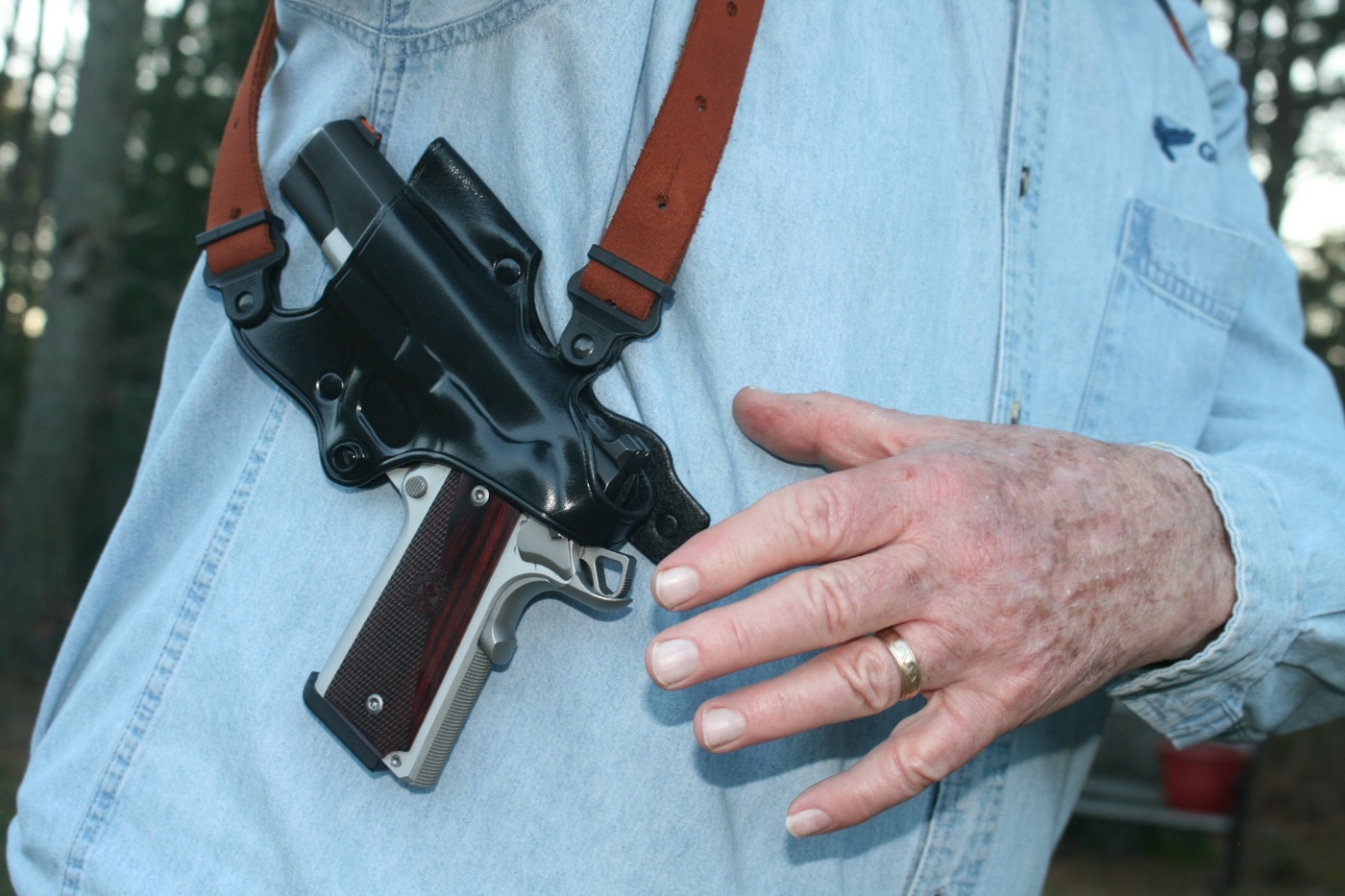
One thing I had not considered until it was brought to my attention was harsh, winter weather. At one time, I spent a great deal of time outdoors in near-freezing or sub-freezing temperatures, but my gun was in a readily accessible duty holster. I was teaching a class in Arizona some years ago when the subject of shoulder holsters came up. At that time, an individual who introduced himself as Slim spoke up and made a very interesting contribution to the conversation.
[Ed. note: Be sure to read Massad Ayoob’s article How to Draw from a Shoulder Holster.]
Slim just happened to be a retired detective from the Windy City, and those who have been there can tell you Chicago is a pretty cold place in the winter. He reported that suits and overcoats were the attire he wore a good part of the year, and trying to quickly draw a gun from the belt from underneath all that clothing was quite the challenge. By undoing a button or two from his overcoat, he was able to produce his gun much faster from a shoulder holster.
Quality Matters
Safety equipment that might be used in defense of your life is no place to cut corners, and this is especially true of holsters. If that Brand X rig costs but a fraction of a similar unit from one of the major manufacturers or small custom shops, that should send up a red flag. Inferior materials compromise durability and weapon retention, even during normal physical activity. When selecting a shoulder holster, avoid those “hobby grade” soft nylon rigs that are supposed to fit a wide range of handguns.
Galco International was founded in 1969 as a small family business by Richard Gallagher and has evolved to be an industry leader. The firm’s commitment to quality is evident, and their premier line of shoulder holsters is held in very high regard. My collection of shoulder rigs includes a few of their examples, including a VHS (Vertical Shoulder Holster) and a Jackass Rig Shoulder System, the latter of which is an updated version of Gallagher’s original pacesetting design.
Both of these rigs feature holsters crafted of premium steerhide, comfortable 1.5”-wide harness straps, a Flexalon back plate and a double magazine case. I particularly like the diagonal, butt-down carry angle of the Jackass Rig Shoulder System which has proven to be an ideal mate for my Springfield Armory 1911 Ronin 4.25”.
Caveats
It is extremely important to remember that when drawing from a shoulder holster you must be especially cognizant of both muzzle direction and keeping your finger off the trigger and outside the trigger guard until the gun is brought to bear on target. Untrained users have a tendency to swing a wide arc as the pistol is drawn, letting the muzzle cover their support side arm as well as other people in close proximity. Returning the pistol to the holster without covering your own body parts or people in close proximity can also be problematic. As a result, many ranges, shooting schools, and instructors prohibit the use of shoulder holsters. But with a little attention to detail, drawing from a shoulder holster can be done in complete safety.

Once the decision is made to draw, both the strong hand and support hand are in motion. The strong hand reaches across the body and “knifes” under the covering garment to obtain a shooting grip and release any retention device. Bring the support hand up and touch the back of the neck. By doing this, you will not cover the support side arm as the gun is withdrawn from the holster. With a vertical rig, lift the gun up and out and keep the muzzle directed at the ground as you move the gun to body centerline to complete the shooting grip. Horizontal rigs require even more attention as there is a tendency to swing a wide arc as the gun is brought on target. You can minimize the risk by taking a bladed body position with the holster angled toward the target, which will prevent the muzzle from traveling in an unsafe direction.
In closing, I would concur that shoulder holsters are not the best overall choice for EDC, but for some applications, they remain a viable alternative. If your situation does not lend itself to a belt holster and a lesser gun in a pocket just won’t do, a shoulder rig could be the answer.
Editor’s Note: Please be sure to check out The Armory Life Forum, where you can comment about our daily articles, as well as just talk guns and gear. Click the “Go To Forum Thread” link below to jump in and discuss this article and much more!
Join the Discussion
Featured in this article
Read the full article here



